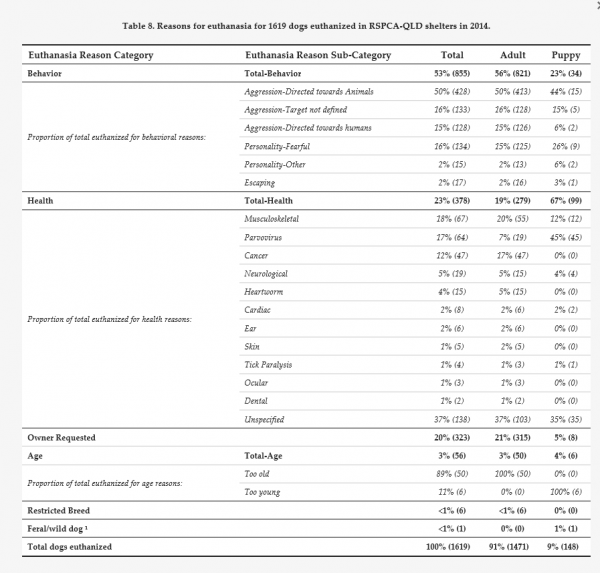The “adopt not shop” argument begins with the assumption that Australia has a massive oversupply of dogs, and – as a result – hundred of thousands of loveable shelter pets are being put down.
But the facts behind these claims are often fuzzy. Animal Liberation Queensland claims that more than 200,000 dogs are euthanised in Australian shelters each year. Australian Teens Against Animal Cruelty reports that “130,000 healthy dogs” are put down. While others make more general references to “250,000 cat and dogs”, such as in the reportage here, here, and here.
So how many dogs are actually being put down in Australia every year?
A paper published last year by the Queensland University Veterinary school gives us the most reliable guess. Drawing on data collected from municipal pounds, shelters and rescue dogs groups across the country, they estimated that there was a total of 211,655 dogs were surrendered or collected between 2012 and 2013. Fortunately, almost half of these dogs (101,307) were subsequently claimed, and another thirty-ish percent (66,443) were rehomed.
Unfortunately, twenty percent (43,900) of the total national admissions were euthanized.
Now, obviously 43,900 is still a huge number. But it’s significantly less that the hundreds of thousands than ‘adopt not shop’ campaigners claim. And, as self-described ‘dog enthusiast’ and border-terrier breeder Tegan Whalan points out on her blog, it pales in comparison to the approximately 450,000 people who buy dogs in Australia every year.
So even if animal rights campaigners were successful, all these potential puppy purchasers adopted all of Australia’s dogs from euthanasia, we’d still have more than 400,000 people who’d miss out without breeders.
This defence of breeding holds, even if we don’t consider the other reasons that approximately 43,900 poor hounds are down every year – reasons which have nothing to do with supply and demand.
Another study from the UQ Vet school, which followed the 11,967 dogs admitted to Queensland RSCPAs in 2014, is useful here. By the end of the year, they found that 32% of the dogs had been reclaimed, 43% had been adopted, 7% were still in the shelter and 14% had been euthanised.
What was the number one reason for euthanasia? Aggressive behaviours. This accounted for 42% of the cases. (Fearful behaviour could also fall into category, because it often leads dogs to lash out). The second reason was owner-requested euthanasia, which accounted for 21% of the cases. And the third reason was health issues, particularly musculoskeletal or neoplastic disease, which accounted for 19% of cases.
Obviously the fate of these dangerous and unhealthy dogs, who have been poorly breed and socialised, is tragic. But considering the pain and suffering that comes with managing chronic illness (both the dog’s and the owner’s), and the fact that 13,000 people each year attend emergency departments in Australia with dog bites, the RSCPA’s rationale is understandable.
In the next piece of this blog series, I’ll explain how we can avoid these unpleasant outcomes all together – by supporting responsible breeders, rather than boycotting them.


